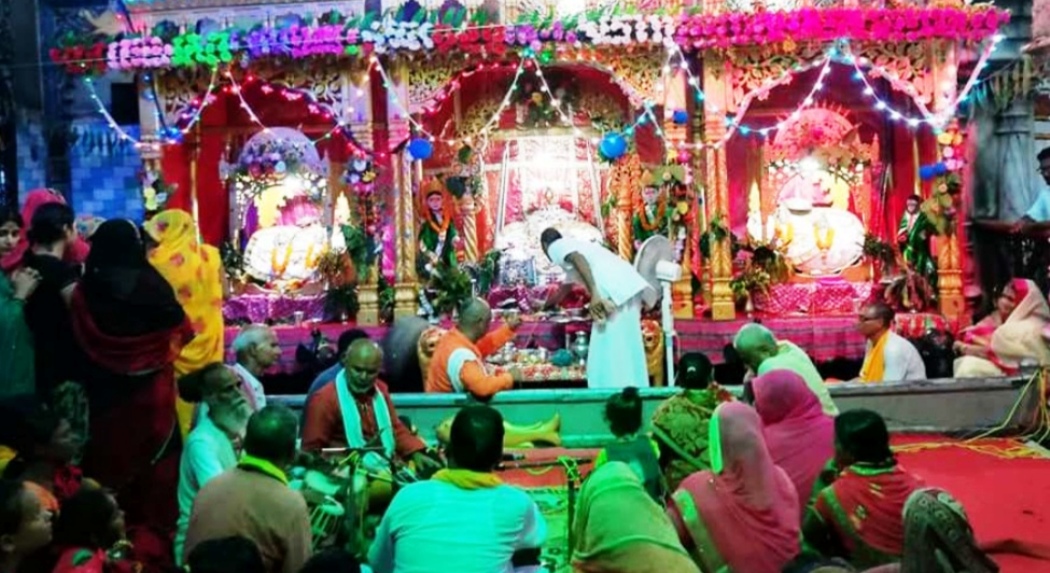The Jhulanotsav festival has officially commenced in Mithilanchal today. Celebrated from Shukla Tritiya (the third day of the waxing moon) to Purnima (full moon), this annual festival is marked by a traditional ritual of swinging deities, particularly Lord Sita-Rama and Radha-Krishna, as described by Mahant Ramroshan Das Vaishnav of Janaki Temple.
During the festival, special thrones are crafted and decorated in various temples and monasteries where the deities are placed and swung. The event features vibrant competitions among temples in Janakpur Dham. On one hand, the idols of Lord Ram and Sita are swung, while on the other, performances such as dramas, dances, bhajans, and folk tales are presented.
Ratnasagar Temple’s Jhula dance is particularly renowned, attracting large crowds of devotees as soon as the evening falls, according to Mahant Baikunth Das Vaishnav. The temple also features local Mithila songs and Jhula and Kajari performances each evening.
The tradition of Jhulanotsav began with the initiation of Janaki Temple’s Adi Mahant Surkishor Das Vaishnav in 1730. It is believed that Surkishor, who considered Goddess Janaki as his daughter, started this festival following divine guidance from her. This tradition, rooted in Ayodhya and Vrindavan, was introduced to Janakpur Dham by historical figures.
The festival’s charm is often linked with the folklore of rice transplantation and various devotional songs played during the event. During Jhulanotsav, young women sing Jhula songs and after worship, offer flowers, Panchamrit (a mixture of five sacred ingredients), and Naivedya (offerings) to the devotees.
The festival continues throughout Shrawan (the lunar month), culminating on Shrawan Purnima night with the ceremonial cutting of the Jhula rope. Although Jhulanotsav is celebrated in various temples across Mithila, Janaki Temple, and Ram Temple are particularly prominent centers of attraction. According to cultural experts, the festival at Janaki Temple involves swinging deities on three special thrones, embodying a deep-rooted religious tradition.
Legend has it that a mountain was formed outside due to the lack of space to store a dowry jewel in Sita’s maternal home. In remembrance, the festival includes the Muni Parvat ritual. This tradition, dating back to the Treta Yuga and the marriage of Lord Ram and Sita, is celebrated with grand displays of gold, silver, and jewels as mentioned in the Ramayana and other religious texts.






